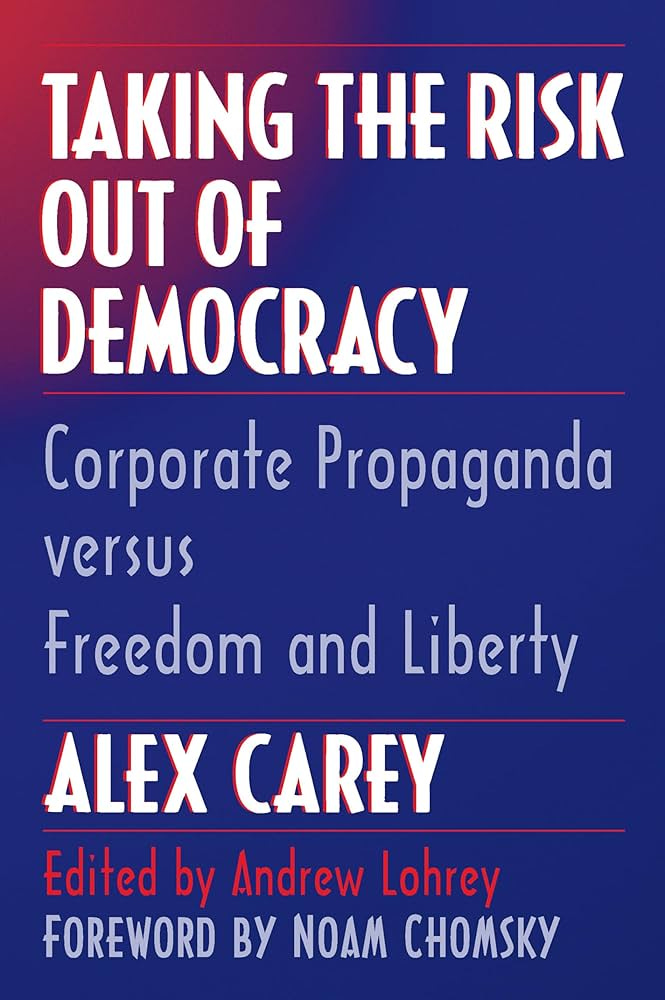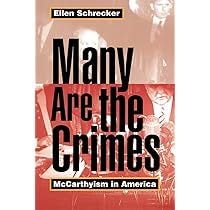Let’s take a moment to reexamine why communism was considered the absolute, ne plus ultra threat to America for the last century.
What is communism? The standard definition is a stateless, classless, moneyless society where labor is no longer exploited. To me the most important aspect of communism is that the workers own the means of production. Workers own work. Now, why is that a threat? Because in our system, capitalists are supposed to own the means of production. The capitalist class, the rich, are supposed to make all the decisions. Communism represents an alternative system where the rich do not own everything and are not needed to make democratic decisions. Never forget, the idea that rich people are unnecessary in society is an existential threat to all rich people.
We are conditioned to identify totalitarianism and repression with communism. We are meant to associate only negative things with the idea that rich people are not completely essential to a functioning economy. Even reading a sentence like that might cause you to recoil and question how true it could be. Is it possible to have a functioning economy where the working-class make all the decisions? We aren’t meant to get even that far down the road to considering such a possibility. Alex Carey writes, “Fear of communism as Satanic is largely derived from hypersensitive nationalism. In popular consciousness it comes largely from the representation of communism as threatening the cherished, the secular-sacred idealized ‘American Way’: threatening in a word, ‘national security’ – a term conceived of as broadly as the Middle Ages conceived of defence of the faith against threats and seductions from heretical ideas and agencies.”

When you hear the words “red scare” you probably think of the McCarthy period in the 1950s. That was certainly the most consequential red square of the last century. But there was also a Great Red Scare of 1918 to 1920 as well. Primarily led by the US Department of Justice, the first red scare was an excuse to portray labor struggles after World War I as a Russian-style revolutionary challenge to all of American society led by foreign-born workers. Many, many immigrants were rounded up as “alien radicals” and deported back to their country of origin. Sounds familiar.
But the Great Red Scare was just an appetizer for the anticommunist crusade that tore through the United States after World War II. By that point conservatives had been trying to discredit Franklin Roosevelt and the New Deal for well over a decade. Yet they were getting no traction. As discussed in my previous post, people’s real, lived experience was just too recent for the propaganda of the National Association of Manufacturers or the Chamber of Commerce to have any impact. But Roosevelt’s death and the end of the war changed things. The Soviets may have helped the Allies defeat Hitler, but that didn’t stop people like General Patton from suggesting the Americans keep marching right past Berlin to Moscow. He was in good company. Winston Churchill had secret plans drawn up, Operation Unthinkable, to launch a surprise attack on Russia in 1945.
“I have here in my hand,” warned Senator Joseph McCarthy in February 1950, “a list of 205 that were known to the secretary of state as being members of the Communist Party and who nevertheless are still working and shaping the policy of the State Department.” With these words Tailgunner Joe, as he liked to call himself for imagined heroics during World War II, launched his eponymous era. A more credulous time journalists, conditioned to take the word of authority as gospel, asked no questions. They didn’t ask to see the list that McCarthy held; even after he revised that number down to 57 when he submitted the text of that same speech into the Congressional Record shortly after. McCarthy himself joked about the list being a fraud, “an old laundry list.” By the time McCarthy made his claim, people were already crawling out of their skin with fear. The fear, amplified by American business propaganda, was that communists were primed and ready to overthrow or undermine the American government to please their Soviet masters at the politburo. Ellen Schrecker describes the mood in her book on that period titled Many are the Crimes. She writes, “Americans at every level of society genuinely believed that communism endangered the nation. The perceived threat was quite specific: subversion, espionage, and sabotage.”

And even though there weren’t hundreds or even 57 communists working in the State Department, the threat was enough to cause a full scale freakout that didn’t just ruin the lives of suspected commies in the US, it led to the death of possibly millions of actual communists in Korea. As Alex Carey writes, Harry Truman probably could have ended the Korean War after just 12 weeks of fighting at the 38th parallel in June 1950. But because of the hysteria fomented and fanned by Tailgunner Joe, Truman felt he had to reject negotiations for a truce with China, India, and the Soviets, lest he be accused of being soft on communism. Instead, the Korean War stretched on for another two and a half years, bombing the Korean peninsula to mud, killing and wounding 5 times more US servicemembers, and bringing starvation and death to millions of Koreans (millions more deaths which pro-capitalists would blame exclusively on communism, no doubt). Only after Eisenhower became president did it feel safe to negotiate an armistice in 1953, at the same place on the 38th parallel.
This is part 2 in my propaganda series, here is a link to PART ONE.
Please give a like, comment, restack, and share to help others find me here on Substack.
Let’s make them pay.
















Share this post